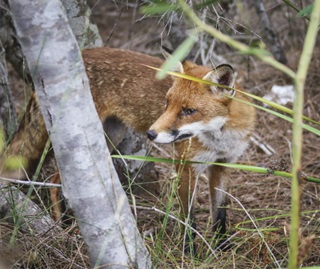
Our fox control guidelines seek to balance cost-effectiveness with the risk to non-target species and the humane treatment of the pest animal for the conservation of biodiversity.
Lethal baiting with sodium monofluoroacetate (1080) is the most cost-effective method of fox control available and it is used widely across Australia (Saunders & McLeod 2007).
1080 is an organic salt that occurs naturally in a range of Australian and other plant species which has evolved as a defence against herbivory (plant eating). It is toxic to a broad range of vertebrates, although foxes and dogs are particularly sensitive (Saunders and McLeod 2007).
Other control methods such as trapping and shooting should be used in concert with baiting to control bait-shy animals and to provide options in areas where baiting is logistically difficult.
All pest control practices should comply with the Model Codes of Practice (COPs) and Standard Operating Procedures (SOPs) for the humane control of key pest animal species.
Pesticide control orders
Restricting who has access to 1080, mandatory training and record keeping and site-specific risk assessment prior to use can help ensure that 1080 is used appropriately in New South Wales.
These mitigating steps are delivered through Pesticide Control Orders issued by the Environment Protection Authority (EPA), and the Pesticides Regulation 2017.
Pesticide users must comply with the current order and the Pesticides Regulation 2017 monitoring requirements – see Public notification, record keeping and training requirements of the Pesticide Regulation 2017.
Protecting non-target animal species
The risk to most non-target species from 1080 baiting for foxes can be minimised by:
- using an appropriate bait type and dosage
- burying baits
- deploying only one bait per location
- spacing bait locations an adequate distance apart.
The risks to domestic animals (especially dogs) and people can be minimised by:
- restricting use in urban areas
- restricting use around buildings and at property boundaries
- deploying warning signs
- undertaking public notification.


